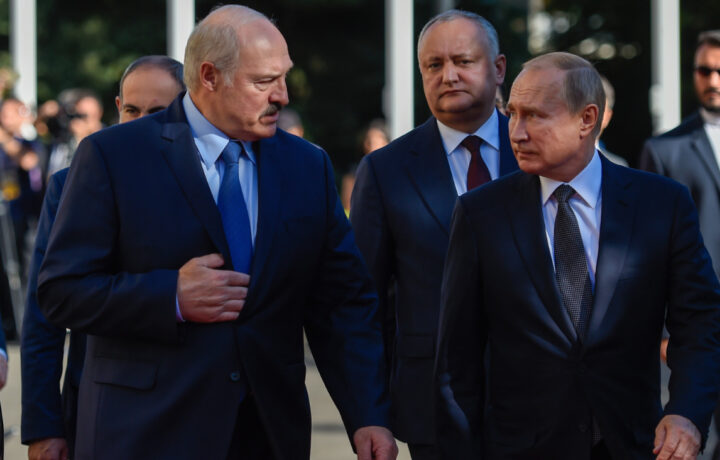Russian President Vladimir Putin and his closest ally, Belarus President Alexander Lukashenko met in St. Petersburg on Sunday. This was the first meeting for the leaders since the Lukashenko helped end the Wagner Group’s mutiny, the biggest threat to Putin’s multi-decade rule. The meeting was filled with propaganda and ladened with bizarre statements. Here are four assertions that are currently being studied by analysts.
Lukashenko Concerned with Regional Aggression Policy
During the meeting, the strange interactions were used to justify potential future actions against the West. Lukashenko crafted a message that the leadership of Poland and Lithuania had a policy of confrontation and that it was stressful. “I don’t know why they have this policy, but they are clearly being pushed into it and the policy is disgusting. The policy is aggressive….it is tantamount to the declaration of some war, with the NATO and the U.S. conducting nuclear training flights in the area. Such actions are intolerable in modern conditions.” Rather than seeing the U.S. as aiding European defenses in the highly volatile environment, Lukashenko instead asks Putin for a tit-for-tat response to NATO and US training flights.
Putin stated they could do that, but it would be better to upgrade military capabilities in the area rather than respond directly. Putin clearly used Lukashenko’s statements to justify sending more sophisticated weaponry into Belarus.
Wagner Group desires a road trip to Warsaw
Lukashenko told Putin he had control of Wagner Group fighters in Belarus, but that they were keen on invading Poland. Lukashenko stated, “They are asking to go West, ask me for permission… to go on a trip to Warsaw, to Rzeszow.” Putin then presented a strange smile. “But of course, I am keeping them in central Belarus, like we agreed.” “We are controlling what is happening [with Wagner],” he said, adding, “They are in a bad mood.”
Just last week, Wagner chief Yevgeny Prigozhin was filmed welcoming his fighters into Belarus after the failed Kremlin rebellion. Within the last couple of weeks, nine convoys of men and material from Wagner have arrived in Belarus. Poland is concerned and is saying they will move soldiers to the east of the country in response.
Poland desires Western Ukraine
Despite having absolutely no basis, Putin and Lukashenko alleged that Poland has territorial ambitions in western Ukraine. Putin repeated the theory on Friday, with Lukashenko stating it again on Sunday, where he accused Poland of trying to “rip off a western chunk” of Ukraine. Lukashenko stated plans to admit western Ukraine into NATO is bolstered by the West as a deliberate method to annex parts of Ukraine.
In response, Lukashenko bizarrely offered to defend western Ukraine from the potential invasion, saying, “The secession of western Ukraine, the fragmentation of Ukraine and the transfer of land to Poland are unacceptable. If the population of western Ukraine needs this, we will, of course, support them.”
Failed Counteroffensive
Putin stated the ongoing Ukrainian counteroffensive to push back Russian forces from Ukraine has “failed.” Russian news agencies quoted Lukashenko saying, “There is no counteroffensive.” Putin replied: “It exists, but it has failed.” Many analysts feel that Putin’s comments were premature, as Ukraine’s summer offensive is still in its early stages.
Kyiv has admitted the counter offensive is slower than desired and they expect a difficult battle to overcome entrenched Russian soldiers. However, the commander of Ukrainian Ground Forces stated last week that, “All of the conditions needed for Ukraine to retake Bakhmut are in place.”
In the U.S.
Over the weekend, U.S. Secretary of State Antony Blinken said that Ukraine has recaptured half the territory that Russia initially seized in the invasion, but that Kyiv still faces “a very hard fight.” Earlier last week, the administration said they will be sending an additional $2.3 billion in financial assistance to Kyiv. The U.S. has invested more than $70 billion in Ukraine since the onset of the war. According to the Keil Institute in Germany, the U.S. has funded Ukraine’s defense and recovery more than any other country in history.




